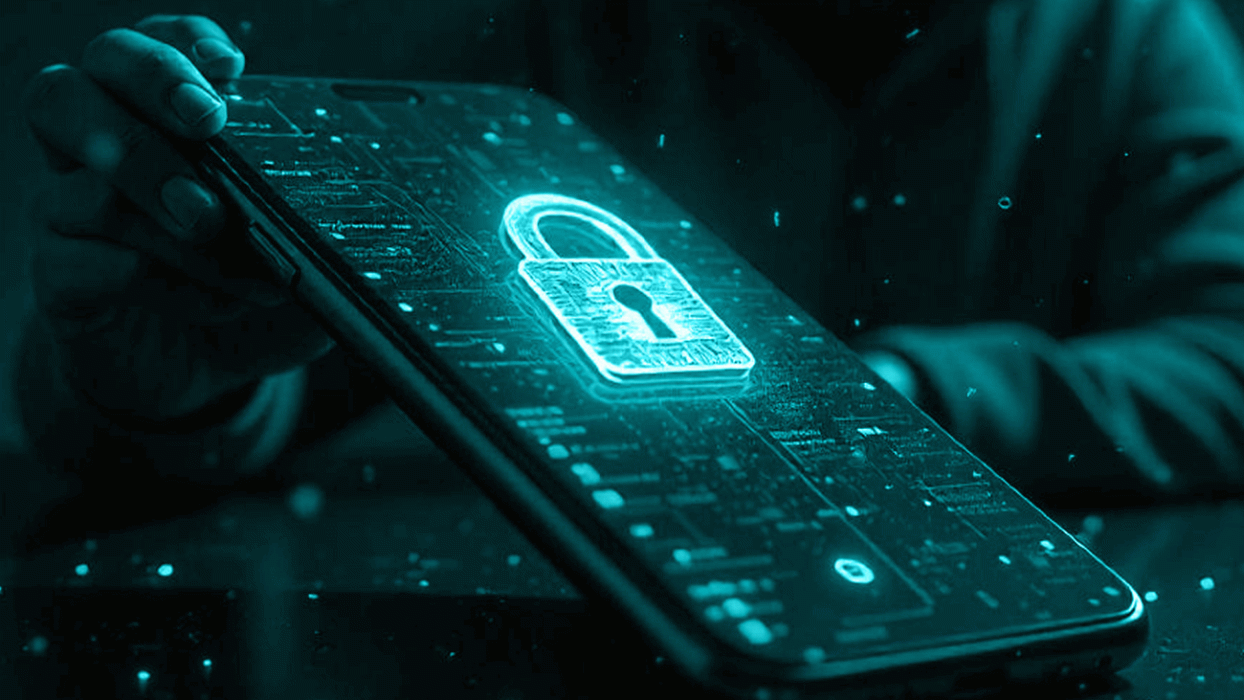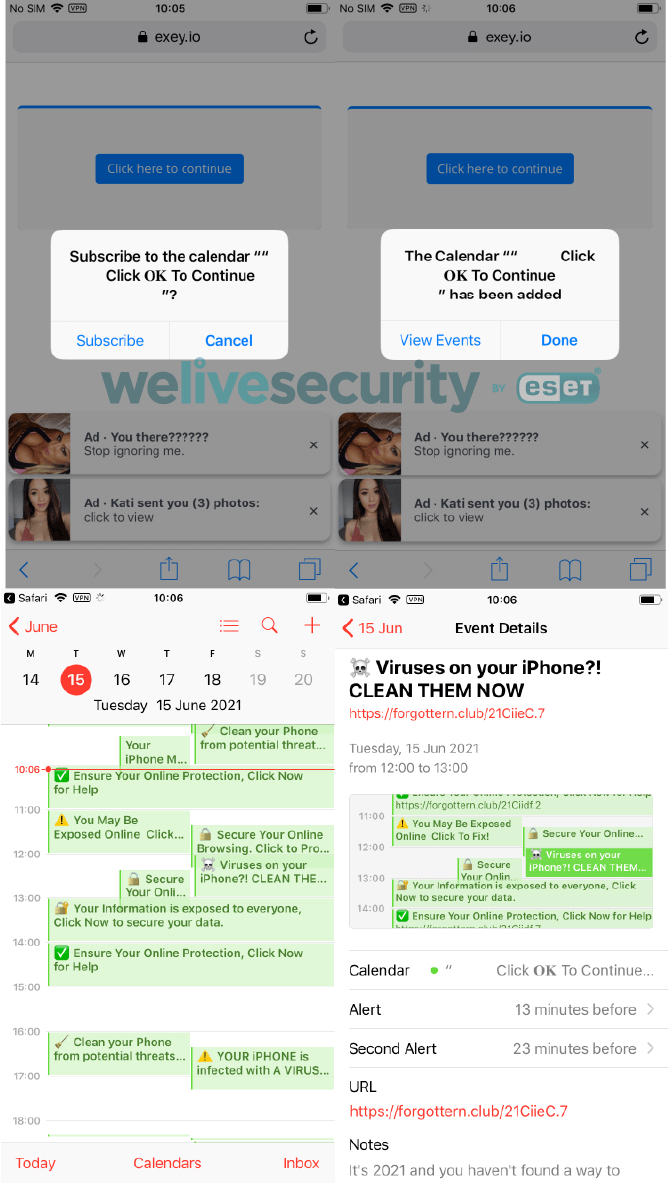Your iPhone is not essentially as invulnerable to safety threats as you might assume. Listed below are the important thing risks to be careful for and the way to harden your gadget towards unhealthy actors.
28 Apr 2025
•
,
6 min. learn

Likelihood is excessive that many individuals assume, “it’s an iPhone, so I’m protected”. Apple’s management over its gadget and app ecosystem has certainly traditionally been tight, with its walled-garden strategy offering fewer alternatives for hackers to search out weak spots. There are additionally numerous built-in security measures like robust encryption and containerization, the latter serving to stop knowledge leakage and restrict the unfold of malware. And passkey-based logins and numerous privacy-by-default settings additionally assist.
The truth that iOS apps are usually sourced from the official Apple App Retailer and should move stringent assessments to be authorized for itemizing has spared many iPhone customers some safety and privateness complications over time. Then again, it doesn’t get rid of the dangers utterly, with all method of on a regular basis scams and different threats bombarding not simply Android, however to some extent additionally iOS customers. Whereas some are extra widespread than others, all demand consideration.
In the meantime, the EU’s current monopoly-busting regulation often called the Digital Markets Act (DMA) goals to make sure a stage taking part in area by providing iOS customers the selection of utilizing third-party app marketplaces. The landmark transfer introduces new challenges for Apple in relation to safeguarding iOS customers from hurt and may additionally have implications for a lot of customers themselves, as they’ll must be extra aware of safety threats lurking round. There’s each motive to consider that unhealthy actors will try to co-opt the transfer for nefarious ends.
As a way to adjust to the DMA, Apple should permit:
- Builders to supply iOS apps to customers by way of non-App Retailer marketplaces. This might improve the possibilities of customers downloading malicious apps. Even respectable apps will not be up to date as often as official App Retailer ones.
- Third-party browser engines, which can supply new alternatives for assault that Apple’s WebKit engine doesn’t (test).
- Third-party gadget producers and app builders to entry numerous iOS connectivity options, like peer-to-peer Wi-Fi connectivity and gadget pairing. The tech big argues this implies it might be pressured to ship delicate consumer knowledge together with notifications containing private messages, Wi-Fi community particulars or one-time codes, to those builders. They may theoretically use the knowledge to trace customers, it warns.
The place else iOS threats are lurking
Whereas the above could “solely” influence EU residents, there are additionally different and presumably extra instant issues for iOS customers worldwide. These embrace:
Jailbroken units
When you intentionally unlock your gadget to permit what Apple calls “unauthorized modifications”, it would violate your Software program License Settlement and will disable some built-in security measures like embrace Safe Boot and Knowledge Execution Prevention. It’s going to additionally imply your gadget not receives automated updates. And by having the ability to obtain apps from past the App Retailer, you can be uncovered to malicious and/or buggy software program.
Malicious apps
Whereas Apple does an excellent job of vetting apps, it doesn’t get it proper 100% of the time. Malicious apps detected on the App Retailer lately embrace:
Web site-based app downloads
You additionally must watch out for downloading iOS apps direct from web sites with supported browsers. As detailed in ESET’s newest Risk ReportProgressive Net Apps (PWAs) permit direct set up with out requiring customers to grant specific permissions, which means downloads may fly beneath the radar. ESET found this system used to disguise banking malware as respectable cellular banking apps.
Phishing/social engineering
Phishing assaults by way of electronic mail, textual content (or iMessage) and even voice are a standard incidence. They impersonate respectable manufacturers and trick you into handing over credentials or clicking on malicious hyperlinks/opening attachments to set off malware downloads. Apple IDs are among the many most extremely prized logins as they will present entry to all the info saved in your iCloud account and/or allow attackers to make iTunes/App Retailer purchases. Look out for:
- Faux pop-ups that declare your gadget has a safety downside
- Rip-off telephone calls and FaceTime calls impersonating Apple Assist or associate organizations
- Faux promotions providing giveaways and prize attracts
- Calendar invite spam containing phishing hyperlinks

In a single extremely refined marketing campaign, risk actors used social engineering methods to trick customers into downloading a cellular gadget administration (MDM) profile, giving them management over victims’ units. With this, they deployed GoldPickaxe malware designed to reap facial biometric knowledge and use it to bypass banking logins.
Public Wi-Fi dangers
When you join your iPhone to a public Wi-Fi hotspot, beware. It might be a faux lookalike hotspot arrange by risk actors designed to observe net site visitors, and steal delicate info you enter like banking passwords. Even when the hotspot is respectable, many don’t encrypt knowledge in transit, which means that hackers with the best instruments may view the web sites you go to and the credentials you enter.
Right here is the place a VPN is useful, creating an encrypted tunnel between your gadget and the web.
Take ESET’s iOS safety guidelines to be taught simply how protected your iPhone is.
Vulnerability exploits
Though Apple devotes a lot effort and time to making sure its code is free from vulnerabilities, bugs can typically creep into manufacturing. Once they do, hackers can pounce if customers haven’t up to date their gadget in time, for instance, by sending malicious hyperlinks in messages that set off an exploit if clicked on.
- Final 12 months, Apple was pressured to patch a vulnerability which may permit risk actors to steal info from a locked gadget by way of Siri voice instructions
- Typically risk actors and business firms themselves analysis new (zero day) vulnerabilities to take advantage of. Though uncommon and extremely focused, assaults leveraging these are sometimes used to covertly set up adware to snoop on sufferer’s units
Staying protected from iOS threats
This would possibly seem to be there’s malware lurking round each nook for iOS customers. That is perhaps true, up to a degree, however there’s additionally loads of issues to reduce your publicity to threats. Listed below are just a few of the principle ways:
- Preserve your iOS and all apps updated. This can scale back the window of alternative for risk actors to take advantage of any vulnerabilities in outdated variations to realize their objectives.
- At all times use robust, distinctive passwords for all accounts, maybe utilizing ESET’s password supervisor for iOS, and swap on multi-factor authentication if provided. That is straightforward on iPhones as it’ll require a easy Face ID scan. This can be certain that, even when the unhealthy guys pay money for your passwords, they gained’t have the ability to entry your apps with out your face.
- Allow Face ID or Contact ID to entry your gadget, backed up with a powerful passcode. This can hold the iPhone protected within the occasion of loss or theft.
- Don’t jailbreak your gadget, for the explanations listed above. It’s going to most definitely make your iPhone much less safe.
- Be phishing-aware. Which means treating unsolicited calls, texts, emails and social media messages with excessive warning. Don’t click on on hyperlinks or open attachments. If you really want to take action, test with the sender individually that the message is respectable (i.e., not by responding to particulars listed within the message). Search for tell-tale indicators of social engineering together with:
- Grammatical and spelling errors
- Urgency to behave
- Particular provides, giveaways and too-good-to-be-true offers
- Sender domains that don’t match the supposed sender
- Keep away from public Wi-Fi. If you need to use it, attempt to take action with a VPN. On the very least, don’t log in to any helpful accounts or enter delicate info whereas on public Wi-Fi.
- Attempt to keep on with the App Retailer for any downloads, so as to decrease the chance of downloading one thing malicious or dangerous.
- When you consider you might be a goal of adware (typically utilized by oppressive governments and regimes on journalists, activists and dissidents), allow Lockdown Mode.
- Preserve an eye fixed out for the tell-tale indicators of malware an infection, which may embrace:
- Sluggish efficiency
- Undesirable advert pop-ups
- Overheating
- Frequent gadget/app crashes
- New apps showing on the house display screen
- Elevated knowledge utilization
Apple’s iPhone stays among the many most safe units on the market. However they’re not a silver bullet for all threats. Keep alert. And keep protected.


